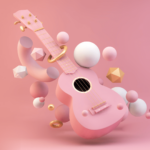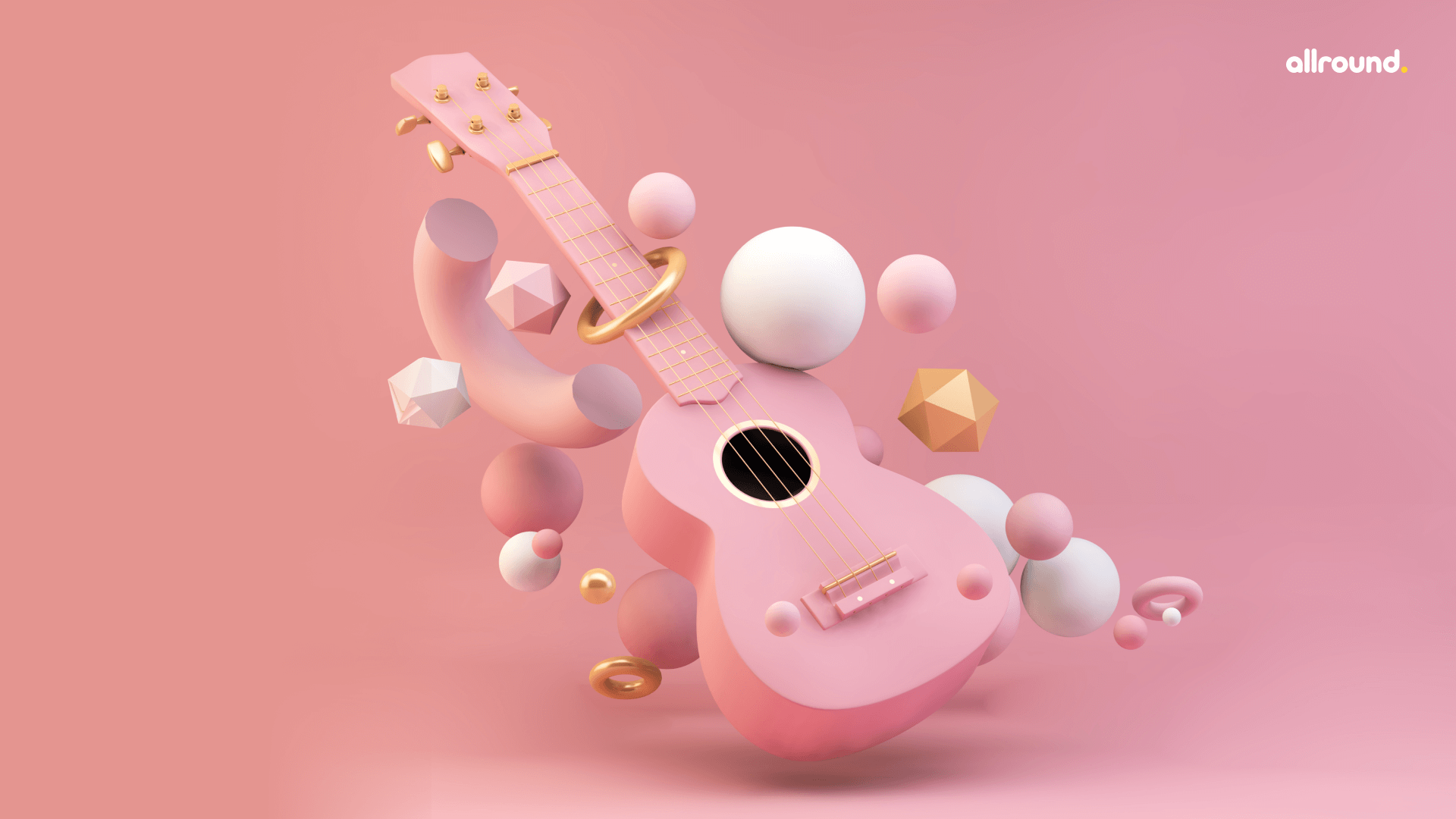Learn How to Play Guitar in 10 Steps8 min read
Are you interested in learning a new skill? Is the guitar the instrument you wish to master someday? Well, everybody has to start somewhere, and we have the perfect guide ready for you! We have listed down 10 simple steps that will help to set you off on your musical journey from a beginner guitar player to a professional string picker in no time! Let’s take a look.
Contents
Pick the right guitar
As someone who is interested in learning the guitar, the first most crucial step you need to take is to pick the right guitar for yourself. There are a wide variety of guitars out there and it can get really overwhelming for a beginner to think about what to choose. But don’t worry because we’re here to help.
Although there are different guitars, we would suggest choosing either the acoustic guitar or the electric guitar if you are just starting out. These two are very different so the first thing you should consider is what kind of genres you play and what sounds you would want to create.
An acoustic guitar has a hollow body with steel and nylon strings that are thick and thus, easier for beginners to use. It has a simple yet pure tone and is cheaper than an electric guitar. You can play classical, pop, country, blues as well as modern genres on this guitar and it is usually the one that is suggested for beginners. However, the downside to this would be that in a band or with a bunch of other instruments, there is a tendency for the acoustic guitar to drown out.
In contrast to the acoustic guitar, a typical electric guitar has a solid body and uses steel strings. It is a very dominant guitar and is always heard. Genres best suited to this guitar are rock, metal and jazz so if these sound like you then don’t hesitate to go ahead with it. Another advantage of this guitar is that it is smaller in size and thus easy to hold.
Apart from choosing the perfect guitar, you also need to think about the cost of buying it. Although many people will say that the more expensive the instrument is the better it’ll be, as a beginner you need not worry so much about getting the most expensive guitar out there. Instead, think about your budget and look for starter models of good brands like Yamaha, Gibson and so on. Buying a used guitar from a known brand is also not a bad idea.
Pick the appropriate guitar size. Ask your friends or family who may have some knowledge in this area to help you out. Also, picking a close-range guitar is advisable as the greater the distance is, the more difficult it is to properly grip the guitar.
Get the appropriate accessories
The next step after choosing and buying your guitar is to get the necessary guitar accessories. Some of the accessories that you will require include guitar strings, a plectrum, a guitar tuner, an amplifier (depending on the type of guitar) and a guitar stand.
Depending on what kind of guitar you choose, you will need different strings. It is crucial to buy the right strings for your guitar type because if you don’t, you will ruin your guitar as well as injure yourself. As we already mentioned, classical guitars require nylon strings and electric guitars require steel strings or strings with metal elements.
There are also different thicknesses to strings. Thicker and stronger strings will have more volume and sound more powerful. However, they do require more hand strength from you in order to strum and pluck them. Thinner strings are easier for beginners to play.
Another thing you will need is a guitar tuner because you will obviously need to tune your guitar from time to time. Even though many people are comfortable playing the guitar with their fingers, you can get yourself a pick/plectrum. It is a small rounded triangle-shaped plastic that is used to pluck and strum the guitar.
If you’re learning the electric guitar, you will also need an electric guitar amplifier. This converts the vibrations from the guitar into sound.
If you want to preserve your guitar and keep it in good condition, we would also suggest investing in guitar stands or wall brackets.
Learn to hold your guitar correctly
Holding your guitar the right way will help you to play it well. Keep in mind that the topmost guitar string is the thickest while the bottommost is the thinnest. Positioning your fingers closer to the lower part of the fret will keep your strings from rattling when you play. One important tip to keep in mind is that while strumming your guitar, your wrist should be doing all the movement and not your whole arm. Another thing to note is there are two ways you can pick your strings – fingerpicking or flatpicking.
Understand how your guitar is structured
Knowing the structure of your guitar will help you to understand the role that is played by each part. The nut and the tuning pegs are present at the head of your guitar. The nut connects the head to the fretboard and makes sure that the strings are securely in place. The tuning pegs help you to stretch your strings and tune the guitar.
Next, the fingerboard and the frets together make up the neck of the guitar. Guitar strings are another crucial part of any guitar. The hole (or the soundhole) in the middle of your acoustic guitar is for sound to reverberate through it.
Learn to read notes or tabs
In order to learn to play the guitar, one needs to either learn notes or tabs. Notes will help you to know which strings to play and for how long. Note values and rests help with this as well as show you when certain notes need to be played. For instance, a whole note is four beats, a half note is held for two beats and so on. There are sharp notes, flat notes, ties, rests and slurs that are all integral parts to understanding and reading notes.
Although there are many sayings to help you to remember your guitar strings, you can use this one: Every Amateur Does Get Better Eventually
Tabs or tablature is a system that is used to transcribe music without using notes. Tabs help you to play a number of songs without having to read notes. They show you which strings to press your fingers with.
Learn some chords
A chord is a group of three or more notes sounded together. There are typically two different types of chords: open chords and barrè chords. Beginners will find it easier to start with open chords. There are eight open chords in total – including major and minor chords. These include C, D, Dm, A, Am, E, Em, and G.
Barrè chords are more difficult to play and you will need them when you expand your guitar-playing skills and want to move on to a wider variety of songs. With these chords, you press many or all the guitar strings at the same time with one finger. The index finger is usually the one that is used.
Play scales on your guitar
A scale is basically a set of musical notes arranged in order. Each scale has eight tones that are played at a certain interval from each other. Scales help to learn new songs on an instrument. As you may already know, there are two scales – major and minor. The major scale is bright and clear; it has a positive sound while the minor scale has a dark and brooding sound.
Practice your guitar
Everyone has heard the saying “Practice makes perfect”, and there is no denying the credibility of it. In order to learn any new skill and grow in it, you need to simply practice, practice, practice. However, don’t make the mistake of trying to sit down with your guitar for hours. Instead, decide a time every day/night and dedicate a minimum of twenty minutes to half an hour to practice your guitar. The human brain cannot concentrate for long hours so keeping your practice sessions short and sweet is key to be consistent and avoid frustration. You can also watch some video tutorials to help yourself visualize how you need to go about playing your guitar.
Take care of your guitar
In order for your guitar to remain in good condition and sound right, you will need to tune it regularly, change your guitar strings (either few at a time or all at once) as well as keep it clean. If you want to go a long way with learning your guitar, you will have to respect the instrument and take proper responsibility for it. Tuning it regularly will keep it sounding like a guitar ought to sound. Keeping it clean will make you feel like playing it because hey, nobody wants to play on a dirty instrument! When you take good care of your guitar, you will learn better.
Play your guitar like a professional
Now that you’re almost there, just keep in mind to practice regularly and focus on playing your guitar with precision. Hold your guitar and position your fingers correctly. In order to produce a consistent volume, you will have to strike your guitar strings evenly. If you feel confident about your skills so far, don’t hesitate to move forward and try out cool tricks and sounds. You can try out techniques like the vibrato and the palm mute technique. A musician is always learning and growing, so don’t hold yourself back from exploring new things on your guitar.8 Steps to Learn Guitar: How to Learn Guitar for Beginners





